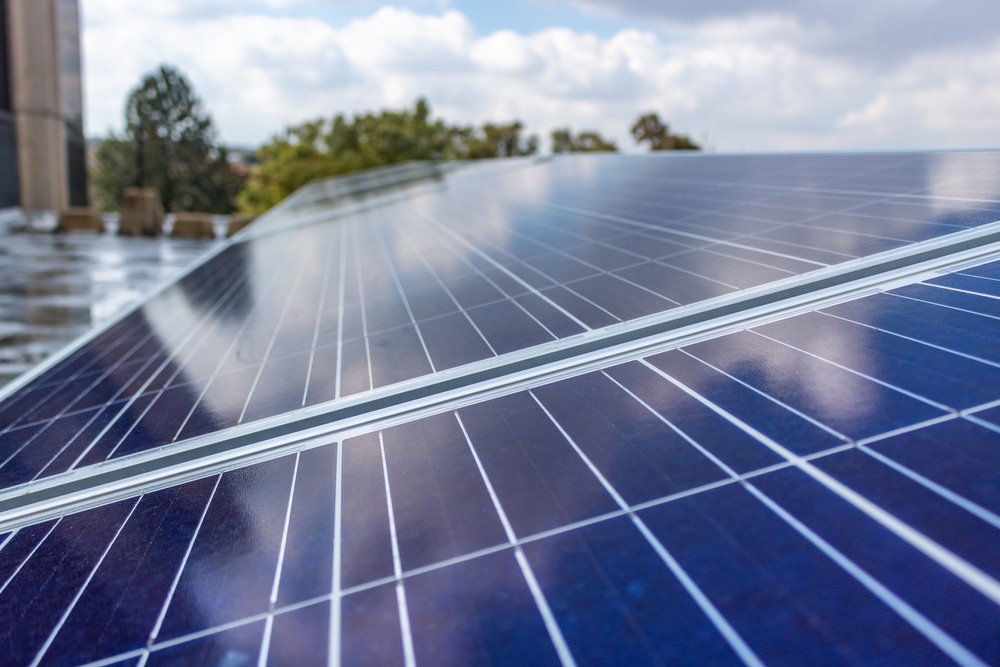Like any renewable energy infrastructure, solar plants must be protected and secured. It is here where robots and autonomous systems can come into play.

Image Credit: RWThomas/Shutterstock.com
Renewable energy sources, such as solar power, are becoming increasingly important in our efforts to combat climate change and transition to a sustainable future. Solar plants, which harness the power of the sun to generate electricity, play a crucial role in this transition.
In this article, we will explore the use of drones, autonomous systems, and robots in ensuring the security of solar plants, as well as some research and commercial applications.
What are Solar Plants?
Solar plants, also known as solar power plants or solar farms, are large-scale facilities designed to harness solar energy and convert it into electricity. These plants utilize photovoltaic (PV) or concentrated solar power (CSP) technologies to capture sunlight and generate renewable energy on a significant scale.
The primary goal of solar plants is to contribute to the production of clean and sustainable electricity, reducing dependence on fossil fuels and mitigating environmental impact.
As solar plants and farms become indispensable contributors to the global energy transition, ensuring their security becomes paramount. Fortunately, advancements in technology have brought forth innovative solutions to safeguard solar installations.
Drones for Solar Plant Security
Drones have proven to be valuable tools in various industries, and their applications in solar plant security are no exception. Here are some ways drones can be used to maintain security in solar plants.
Perimeter Monitoring
Drones equipped with high-resolution cameras and thermal imaging technology can patrol the perimeter of solar plants, detecting any unauthorized access or potential security breaches.
Intruder Detection
Drones can quickly cover large areas and identify suspicious activities or intruders within the solar plant premises. They can transmit real-time video feeds to security personnel, enabling swift response and intervention.
Sophisticated drone systems with these capabilities are already available. An example of a drone designed for such applications is the DJI Agras MG-1P Series. It can carry out autonomous flights, perform aerial inspections, and monitor the security of solar plants.
Furthermore, there are research efforts to continue improving such drones' features that involve integrating sophisticated monitoring mechanisms in drone swarms to enhance the security of solar plants. These swarms can collaborate and communicate with each other to cover large areas efficiently.
Autonomous Robot Systems for Solar Plant Security
Autonomous systems, including robots, offer a promising solution for enhancing the security of solar plants. Here are some applications.
Patrolling and Surveillance
Autonomous robots can patrol the solar plant premises, continuously monitoring for any signs of intrusion or suspicious activities. They can navigate obstacles, follow predefined routes, and provide real-time data to security personnel.
Anomaly Detection
Using advanced sensors and artificial intelligence (AI), autonomous systems can detect anomalies in the solar plant's infrastructure, such as faulty panels or equipment malfunctions. This early detection helps prevent potential security risks and ensures the smooth operation of the plant.
An example of this system is the S5 PTZ Security Robot by SMP Robotics which can cruise between the rows of photovoltaic panels and stop at vantage points for surveillance of areas not covered by CCTV cameras which are always stationary.
The video surveillance system of the robot identifies any motion and adjusts the PTZ camera's direction towards the origin. The camera then magnifies the view and sends the image of the moving subject to the center of the monitor using WiFi. The operator stationed at the central monitoring station can closely examine the object in motion, as seen through the robot's PTZ camera, on their remote display.

Image Credit: zhengzaishuru/Shutterstock.com
The Benefits of Using Robots for Solar Plant Security
The integration of robots and autonomous systems in solar plant security offers several benefits:
Increased Efficiency
Robots can cover large areas quickly and efficiently, reducing the time and effort required for manual security patrols. This allows security personnel to focus on critical tasks and respond promptly to any security incidents.
Reduced Labor Costs
By automating security tasks, solar plant operators can reduce the need for human security personnel, leading to cost savings in the long run. Robots can work around the clock, ensuring continuous surveillance without the need for breaks or shifts.
Data Analytics
Over time, autonomous robots can collect valuable data about security patterns, vulnerabilities, and incidents. This data can be analyzed to improve the overall security strategy and identify areas for operational optimization.
Enhanced Safety
Robots can be deployed in hazardous or challenging environments, such as rooftops or remote areas of solar plants, reducing the risk to human security personnel. They can also withstand extreme weather conditions, ensuring consistent security coverage.
Conclusion
As the demand for renewable energy continues to grow, ensuring the security of solar plants becomes paramount. Drones, autonomous systems, and robots offer innovative solutions to enhance the security and efficiency of these vital infrastructures.
Commercial examples, such as the DJI Agras MG-1P Series and S5 PTZ Security Robot, demonstrate the practical applications of these technologies; meanwhile, ongoing research and development projects like drone swarms showcase the potential for further advancements in solar plant security.
By harnessing the power of robots and autonomous systems, we can protect our solar plants, promote renewable energy, and contribute to a sustainable future.
References and Further Reading
Dji, 2023. MG-1P - DJI [Online]. DJI Official. URL https://www.dji.com/mg-1p
McSweeney, K., 2016. Drones and robots make solar panels more efficient [Online]. ZDNET. URL https://www.zdnet.com/article/drones-and-robots-make-solar-panels-more-efficient/
SMP Robotics, 2023. Robots for Solar Farms | Photovoltaic Power Plant Security | Perimeter Surveillance | Inspection | Bird Control. SMP Robotics - Autonomous mobile robot. [Online]. URL https://smprobotics.com/application_autonomus_mobile_robots/solar-farms-and-photovoltaic-power-plants/
Wesoff, E., 2023. How robots could dramatically speed up solar farm construction [Online]. Canary Media. URL https://www.canarymedia.com/articles/solar/how-robots-could-dramatically-speed-up-solar-farm-construction
Disclaimer: The views expressed here are those of the author expressed in their private capacity and do not necessarily represent the views of AZoM.com Limited T/A AZoNetwork the owner and operator of this website. This disclaimer forms part of the Terms and conditions of use of this website.